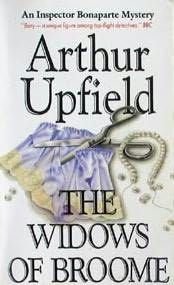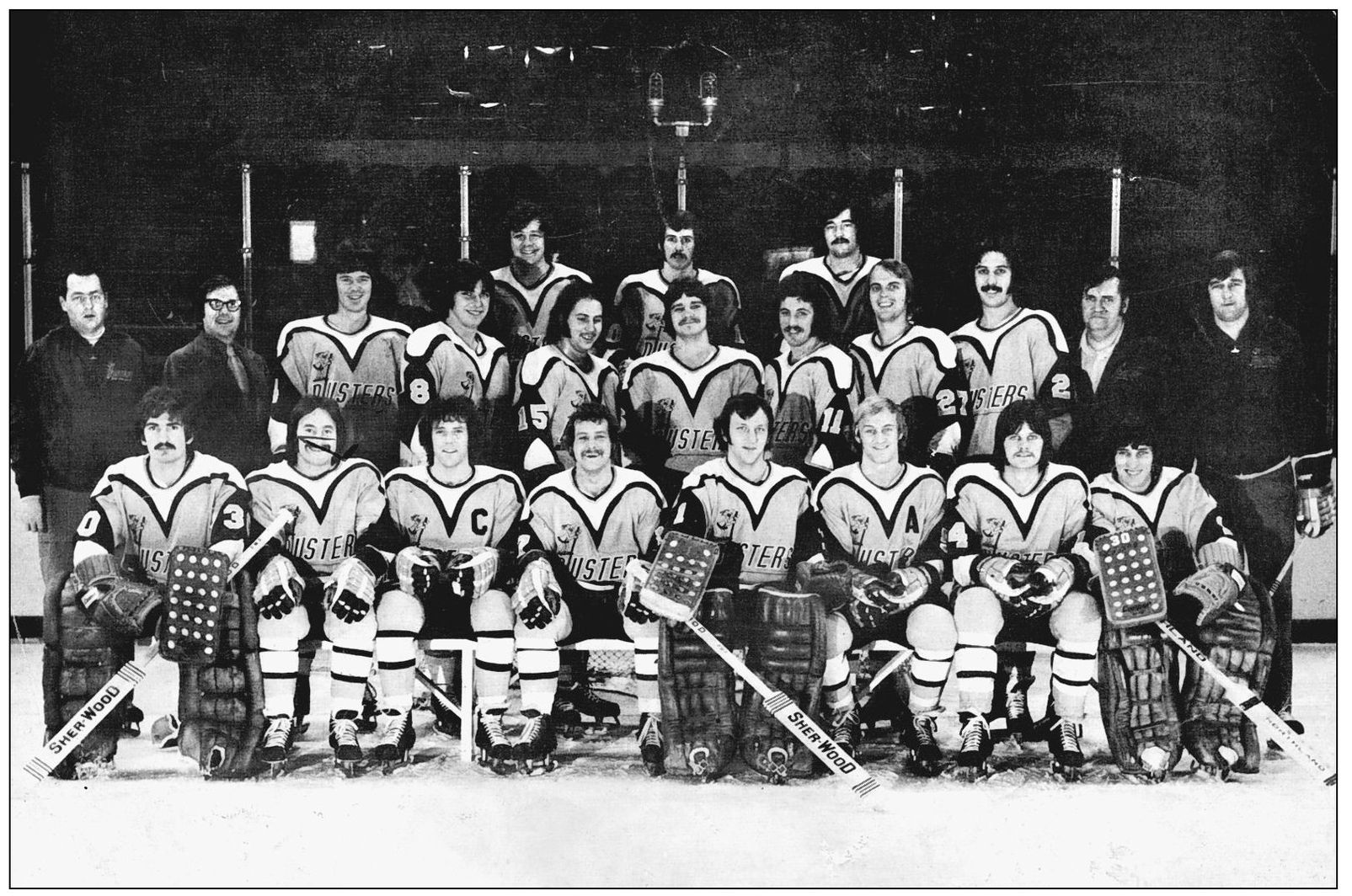ONE
Broome Dusters
19731980
After the dedicated work of many local supporters and the expenditure of $7.5 million, the Broome County Veterans Memorial Arena opened on August 29, 1973. Win Warner, for one, had been pushing for construction of an arena for decades. Warner was an off-ice official who assisted the new owners with start-up activities. Stuart McCarty (shown here), that years local United Way chairman, was among the many fans who could now enjoy the opportunity to skate at the new facility.
The 19731974 season, the Broome Dusters first in the North American Hockey League (NAHL), saw them fail in a valiant effort to reach the playoffs. However, while they did not succeed on the ice, they clearly won the hearts of area fans. Professional hockey at the Arena succeeded beyond expectations in terms of fan support. Why did this happen? The turning point may have been the Dusters huge win on November 11, when they shocked a Syracuse powerhouse that had been the previous years Eastern League champions, defeating them by a score of 10-4. Soon fans devoted their energies to hoisting signs, such as the one below, rather than throwing debris, as they had done previously. (In fact, spectators had made it common practice to hurl the plastic armrests from their seats onto the icethat is, until one of the armrests hit the head of Dusters captain Bob Channell.)

In this rare photograph, the Broome Dusters mascot, Thor (based on a character in the B.C. comic strip, drawn by cartoonist Johnny Hart), plays broom-ball with a pair of enthusiastic fans. Hart, who was born in Broome County (Endicott), also created the logo for both the Dusters and the B.C. Icemen.
The 19731974 season was the first for the Broome Dusters hockey club, and they were in the hunt for a playoff spot right up to the final week of play. That was an amazing achievement considering that only 7 of the 46 who wore the gold-brown-and-white uniform had been there for the entire season. Clearly, much of the credit for that success belonged to coach Wayne Kitchingman.
We have all heard the theory that baseball may have evolved from the English sport of cricket. It makes some sense, since both games utilize a bat and a ball. But how many sports fans know of a link between cricket and hockey? The connection comes from the term hat trick, which originated when the ordinarily reserved English fans tossed their hats after the knocking down of three consecutive wickets. When a hockey player scored three goals in a game, appreciative spectators on this side of the Atlantic threw their hats onto the ice. Binghamton fans continued this tradition, as illustrated in this photograph from a Dusters home game.
Norm Martel played all 74 games for the Dusters during that first season at the Arena (19731974). He scored 7 goals and had 27 assists. His seven goals tied him with Paul Brown for most goals scored by a Dusters defenseman. The 27 assists is a team record for defensemen that was never broken.
Not to be outdone by Norm Martel, who had tied him for the Dusters record of seven goals by a defenseman in that first season, Paul Brown set his own record. On January 30, in a game against Long Island, he tallied two goals in the same contest. To make the achievement even sweeter, he did it in front of an appreciative home crowd at the Arena.
Roger Kosar appeared in goal for the Dusters in 19731974. Playing in more games than the other five goalies carried by the team combined, Kosar set club records for the longest shutout sequence (62 minutes, 45 seconds) and longest unbeaten streak (four gamesthree wins and a tie).
In that first year (19731974), Dusters goaltender Roger Kosar also set NAHL records for games and minutes played by a goalie. Having all that ice time meant Kosar (No. 30) witnessed quite a few fights. His relaxed approach to this fracas is revealed by his casual elbow on the net, as he waits for the officials to subdue an opposing player. A teammate (No. 14) adds some restraint to the situation.
The Mohawk Valley Comets are the opponents and this time the fighting has spread into the seats. Clearly visible are (No. 5) Rod Bloomfield, who was usually the first one to get to the action; (No. 24) Neil Claremont, halfway there; (No. 9) Ken Davidson, already over the glass; and a number of other Dusters getting ready to help. Shown in the photograph to the right is the general manager of the Comets, pointing out the culprits to the Dusters general manager, Ron Orr (right). Ron is the brother of hockey legend Bobby Orr, the great Boston Bruins star.






















